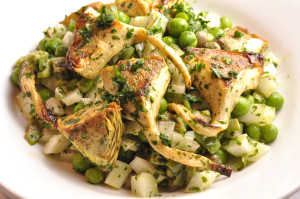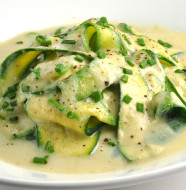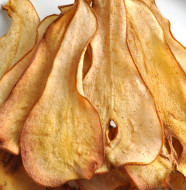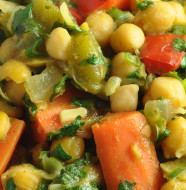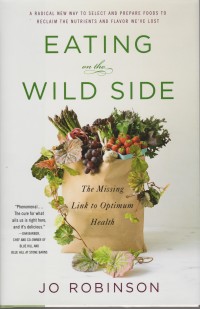Who doesn’t want to be healthy? It’s central to our sense of well-being that our bodies function well and support our activities, so naturally we all want to be healthy. And most people intuitively understand what it takes to build and maintain a healthy body. It’s not complicated: eat right, exercise regularly, get rest. There is a little more to it than that, because we’re not just physical creatures; there are a few factors that are more difficult to manage, such as social, emotional, stress and self-esteem, among others, that can deeply affect our state of health. Even how we breathe can have a powerful impact on both our physical and mental health.
But let’s make it easy on ourselves. What we eat covers a lot of ground and can help address nearly all aspects of human health. Carefully chosen, our food will provide excellent fuel and substance to power and nourish our cells. This will enable us to do healthful exercise and respond to it by building healthy blood, bones, and tissues. Properly and thoughtfully prepared, our food can also heal infirmities, excite our imagination, stimulate fabulous pleasure, uplift our spirit, and even trigger a profound feeling of gratitude. Food can do all of that, and more. Why? Because we need it. We need to breathe, and inhaling cool, crisp, clean mountain air feels absolutely magnificent. We need to eat, and eating delicious wholesome food—especially when we’re very hungry—is among the most gratifying experiences life has to offer.
It’s important for food to be healthful in nature; this is an absolute. But to be good food it must be made by inspired people who are willing to give it their full attention. The value of food prepared this way cannot be overstated. The right food can transform a life forever. Seriously. I still vividly recall a cream of crab soup I had in Luxembourg when I was eighteen years old. The depth, complexity and brilliant flavors in that cup were so sexy, time stood still in my mouth. That soup is alive and well in my taste memory to this day. I’ve long ago forgotten the name of the restaurant and many of the other details, but that first astonishing spoonful knocked the trajectory of my life irrevocably onto a path that has been nothing short of miraculous for me.
I won’t lie to you, good food takes some effort. It requires attention. But let’s face it: the same is true for everything of value. The good news is, it really doesn’t take that much, and it’s not very far to go from decent food to extraordinary food. All you have to do is want it enough to make the effort. Let me prove this to you. Just take the plunge and make this spring salad:
Roasted Artichoke Salad with Peas and Olives
Makes 4 servings
4 large artichokes, preferably with long, thick stems attached
1 lemon
4 ½ tablespoons extra-virgin olive oil
1 teaspoon sea salt
½ teaspoon freshly ground black pepper
10 ounces petite garden peas
3 tablespoons lemon juice
1 tablespoon Dijon mustard
½ large fennel bulb, cored and cut into ¼-inch dice
½ cup green olives, preferably Castelvetrano, cut into ¼-inch dice
3 tablespoons capers, drained
2 tablespoons chopped parsley
Preheat the oven to 350 degrees F.
Snap off the tough outer leaves of the artichokes.* Cut the lemon in half and squeeze the juice through a strainer into a large bowl. Cut away the tough, fibrous outer portion from an artichoke, including the stem, exposing the tender white flesh underneath. Rub the exposed flesh with a lemon half as you work, to prevent discoloration. Cut the cone of leaves off just above the heart. Cut the artichoke into quarters lengthwise, and carve out the hairy choke. Rub with the lemon and then put the quarters in the bowl with the lemon juice, tossing gently to coat. Repeat with the remaining artichokes.
Remove the artichokes from the lemon juice and put them in a medium roasting pan. Save the lemon juice. Add 1½ tablespoons of the olive oil, ¼ teaspoon of the salt and ¼ teaspoon of the pepper to the roasting pan. Toss well. Put the pan in the oven and roast the artichokes for 40 minutes, turning them every 10 minutes to assure even browning.
While the artichokes are roasting, bring a medium pot of water to a boil with ½ teaspoon of the remaining salt and add the peas. Cook for about 2 minutes, and then drain. Refresh under cold running water and drain thoroughly.
Whisk the lemon juice, mustard, and the remaining 3 tablespoons olive oil, ¼ teaspoon salt and ¼ teaspoon pepper in a large bowl until emulsified, about 1 minute. Add the warm artichokes, peas, fennel, olives, capers and parsley. Toss gently but thoroughly. Divide among 4 plates and serve at once.
*To watch a video demonstrating the preparation of artichokes, click here: http://youtu.be/bTvhOyDFVmQ
Note: This first appeared in the March/April 2014 issue of Bella Spark Magazine


